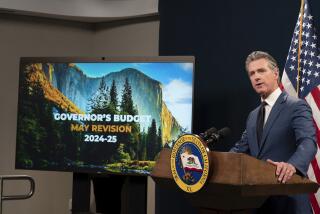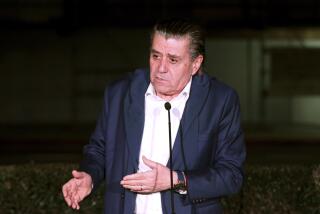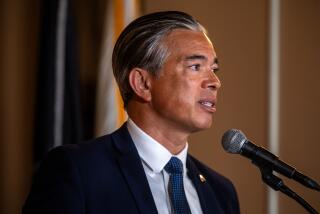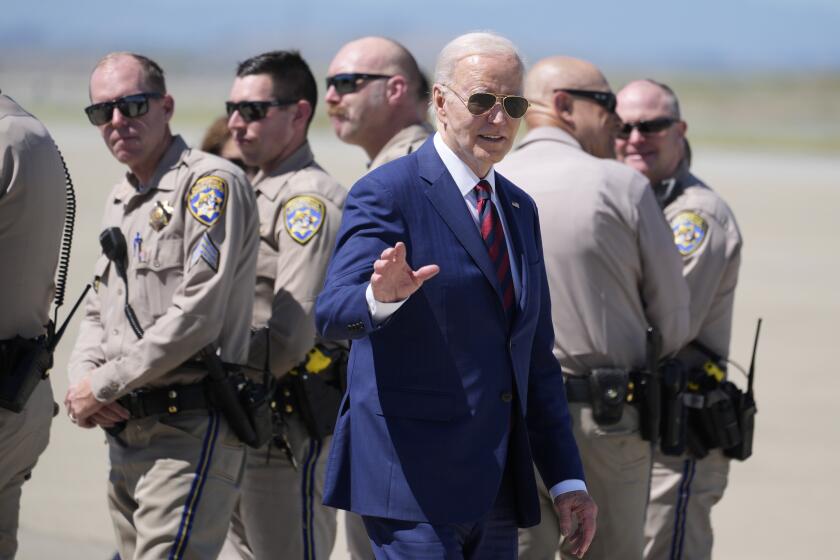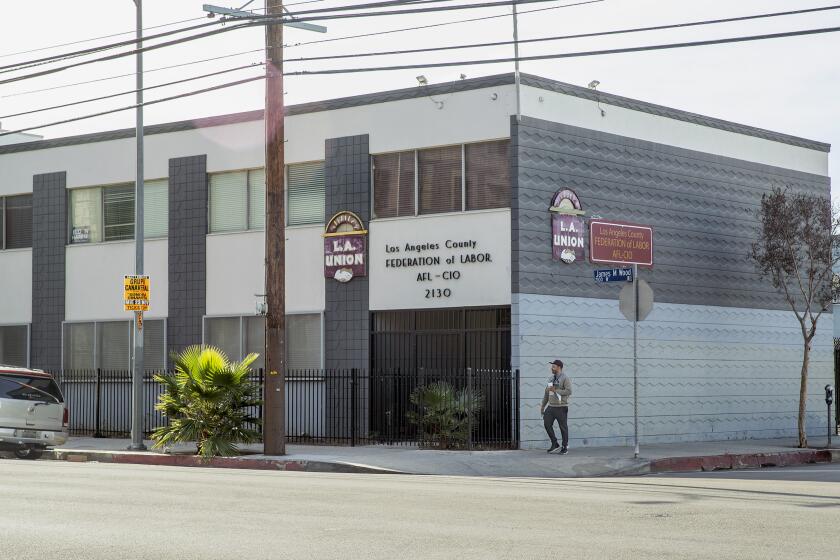Pay Initiative Poses the $64,000 Question : Confusion on Prop. 61 Impact Prompts Ads That May Not Be on Target
California’s improving educational system, its murder investigations and its public health care are all in jeopardy if Proposition 61 passes Nov. 4, warn television commercials airing statewide that attack the measure.
Are those threats real or imagined? Maybe, maybe not. No one knows for sure.
Public employee unions, meanwhile, “are pouring more than $6 million into the campaign to defeat” the controversial, pay-limiting measure, which would also slice pensions and exempt Civil Service workers, according to commercials by anti-tax crusader Paul Gann, the initiative’s sponsor.
Are these statements true? Probably not, but again, no one knows for sure.
What It Would Do
There is no dispute over some things Proposition 61 would do: Set the governor’s salary at $80,000, other constitutional officers at $52,500 and limit the salaries of all other appointed officials to $64,000; ban carry-over of accrued vacation and sick-pay benefits from year to year, and limit outside government contracts.
But there is strong disagreement over other possible effects of the measure. Among the issues being argued in campaign ads--amid the dire predictions and stretched truths that are standard fare with many initiative campaigns--are these:
- Are Civil Service employees exempt from the initiative?
- Does the $64,000 limit apply to salary only, or to the combined value of salary and benefits?
- Would the salary cap lead to wage freezes for lower-paid workers?
- Would the ban on the carry-over of sick leave and vacation benefits result in a government-paralyzing, one-time pay-out of $7 billion?
Much of the disagreement over Proposition 61 stems from ambiguities in the way it is written. Both sides acknowledge that many of the uncertainties will have to be resolved in the courts if the measure passes. But until then, the two sides view any future impact, however remote, as possible--and therefore fair game for their commercials.
The 30-second TV and radio spots are almost by definition simplistic, giving voters nothing but quick, emotionally charged impressions. For the moment, the opponents seem to be waging the more effective campaign.
Combined with thousands of billboards that dot California’s roadsides, airing of the radio and TV messages opposing Proposition 61 apparently has contributed to an erosion of early support for the measure. Both the California and Los Angeles Times polls show growing voter opposition to the measure.
The most recent California Poll showed half the voters were still undecided. The Times Poll, meanwhile, showed only 12% undecided after surveyed voters were given short summations of both sides’ arguments. Of those indicating a choice, 57% were opposed and 31% favored the measure. The Times Poll, taken from Oct. 11 to 16, showed voter rejection across all socioeconomic lines.
Though clearly holding the upper hand, Proposition 61 opponents are still wary of both the measure’s built-in attractions and Gann’s success with past initiatives. Gann is not shy about reminding voters, either.
Co-author with the late Howard Jarvis of the 1978 property tax-slashing Proposition 13, Gann invokes both Jarvis’ memory and the 1978 measure in ads urging passage of Proposition 61. Passage, Gann says in free TV and radio spots he has demanded under the Federal Communications Commission’s Fairness Doctrine, will “save our state.”
Gann’s ads also use arguments identical to those ordered off the statewide voter pamphlet. In August, a judge in Sacramento made the ruling after hearing testimony from opponents that Gann’s statements were “false and misleading.”
Gann, for example, contends in one radio ad that Civil Service employees are exempt because Proposition 61 applies only to “appointed” officials. Opponents say courts are likely to rule that Civil Service employees technically are appointed and therefore subject to the limit.
Gann and his allies also say they meant the $64,000 limit to apply only to salaries, not fringe benefits. Opponents say that Gann’s intent alone cannot be translated into law. They note that instead of specifying that it applies only to salary, the initiative uses the ambiguous word “compensation.” This means, the opponents argue, that the courts could rule that fringe benefits are subject to the limit as well.
A prominent weapon in the No-on-61 arsenal is an argument that lower-echelon workers are likely to be victimized by the measure. If top-level salaries are limited, opponents argue, teachers, police officers, firefighters and other public employees will find future pay raises stifled in order to maintain normal distinctions of rank. It is a purely speculative argument because the initiative does not specifically address the issue.
The anticipated cost of the ban on the year-to-year carry-over of vacation and sick pay is similarly unclear. Gann said he did not intend for the ban to apply to benefits earned before Nov. 4.
But the state’s nonpartisan legislative analyst, in his discussion of Proposition 61 in the statewide voter information pamphlet, says that if the ban applies to previously accrued benefits, the cost of paying it off could be as high as $7 billion. The No-on-61 forces frequently cite the figure in their “we can’t afford it” campaign.
Last week, opposition attorneys complained to 20 television and 45 radio stations about Gann’s ads. Several stations agreed to drop one of the ads in favor of a less controversial one, while others decided not to air ads from either side.
Gann’s top aide, Ted Costa, said the Yes-on-61 campaign had revived the arguments that were rejected from the voter pamphlet for use in the ads on the belief that the Sacramento judge’s ruling, which is on appeal, applied only to the pamphlet.
“The judge may have made a ruling, but he didn’t wipe out the First Amendment, my gosh,” Costa said. “In the last analysis, we have constitutional rights to write a ballot measure and say what our intentions are for that measure.”
Another pro-61 radio spot contends that public employees are pouring $6 million into the No-on-61 campaign. No-on-61 spokesman Don Schrack said the opposition had collected only $3.1 million as of last week, much of it from sources other than public employee unions.
In the final weeks before the vote, most of the No-on-61 campaign’s money is being spent to air three TV ads: one using a Los Angeles County sheriff’s homicide investigator, another showing a mother worried over her son’s education if teacher salaries are cut, and a third showing hospital patients whose doctors would purportedly have their salaries cut under the measure.
The opponents strongly imply that the measure would not only cut salaries, but also cause the quality of education, health care and law enforcement to deteriorate as the best employees leave public service for higher-paying jobs.
Richard Woodward, partner in the consulting firm running the opposition campaign, conceded that the ads are not giving voters a true picture of Proposition 61’s impact, but he blames that vagueness on the measure itself.
“It’s so ambiguous and poorly written.”
More to Read
Get the L.A. Times Politics newsletter
Deeply reported insights into legislation, politics and policy from Sacramento, Washington and beyond. In your inbox three times per week.
You may occasionally receive promotional content from the Los Angeles Times.
